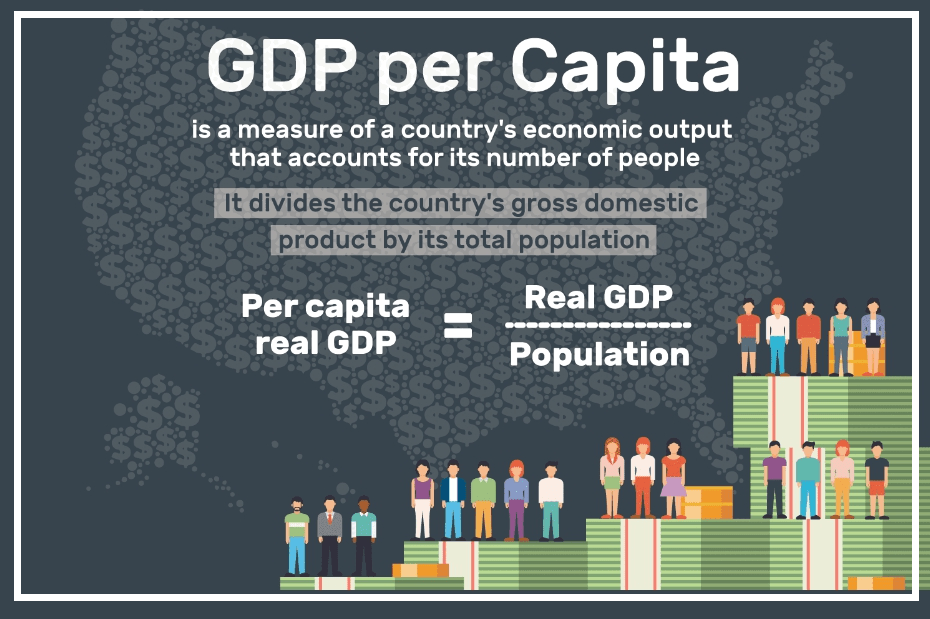Gross domestic product (GDP)
What is gross domestic product?
Gross domestic product, also known by its abbreviation GDP, measures the economic size of a country by calculating the monetary value of all of the country’s finished goods and services over a specified period, most often annually or quarterly. The result of this calculation is nominal GDP, but to compare GDP across years, nominal GDP must be adjusted for inflation using a price deflator, which is real GDP.

Generally, in business cycle analysis, a country is considered healthy if real GDP increases or expands. It is said that the economy is booming when the increase is higher than the growth momentum.
If real GDP decreases or contracts for two consecutive quarters, the country is considered to be in a recession. A depression occurs when real GDP falls by 10% or more from peak to trough.
How is the GDP metric used?
Economists use GDP to compare the size, health, and development trends of a national economy; policymakers use it to evaluate and adjust the economic programs under their control, and investors use GDP as a general indicator of risk and potential return in a country or group of countries. Similar to the market capitalization of a company’s stock, GDP gives an investor a general idea of the growth, risk, and volatility that can be expected when investing in an asset or assets domestically.
GDP is used internationally to compare the size and strength of the economies of different countries. Individual national GDPs must be converted to a standard unit using the foreign exchange market rate or the purchasing power parity rate. The latter is usually based on the US dollar.
Comparison of GDP identifies the largest and most significant economies that determine world trade policy, for example, the USA, China, Japan, Germany.
How is GDP calculated?
To calculate GDP, indicators of “finished goods and services” are used, including consumption, investment in business, government spending, exports and imports.
There are three ways to calculate GDP: the expenditure method, the production method, and the income method.
Each method gives the same value by analogy with the price of an asset, which is the same for both the buyer and the seller.
Formula for spending method:
Nominal GDP = C + I + G + (X- M)
C = Consumption, I = Investment, G = Government spending, X = Exports, M = Imports
The formula for the GDP price deflator is:
Deflator = (Nominal GDP/Real GDP) x 100
Formula for real GDP:
R = N/D
R = real GDP, N = nominal GDP, D = deflator

